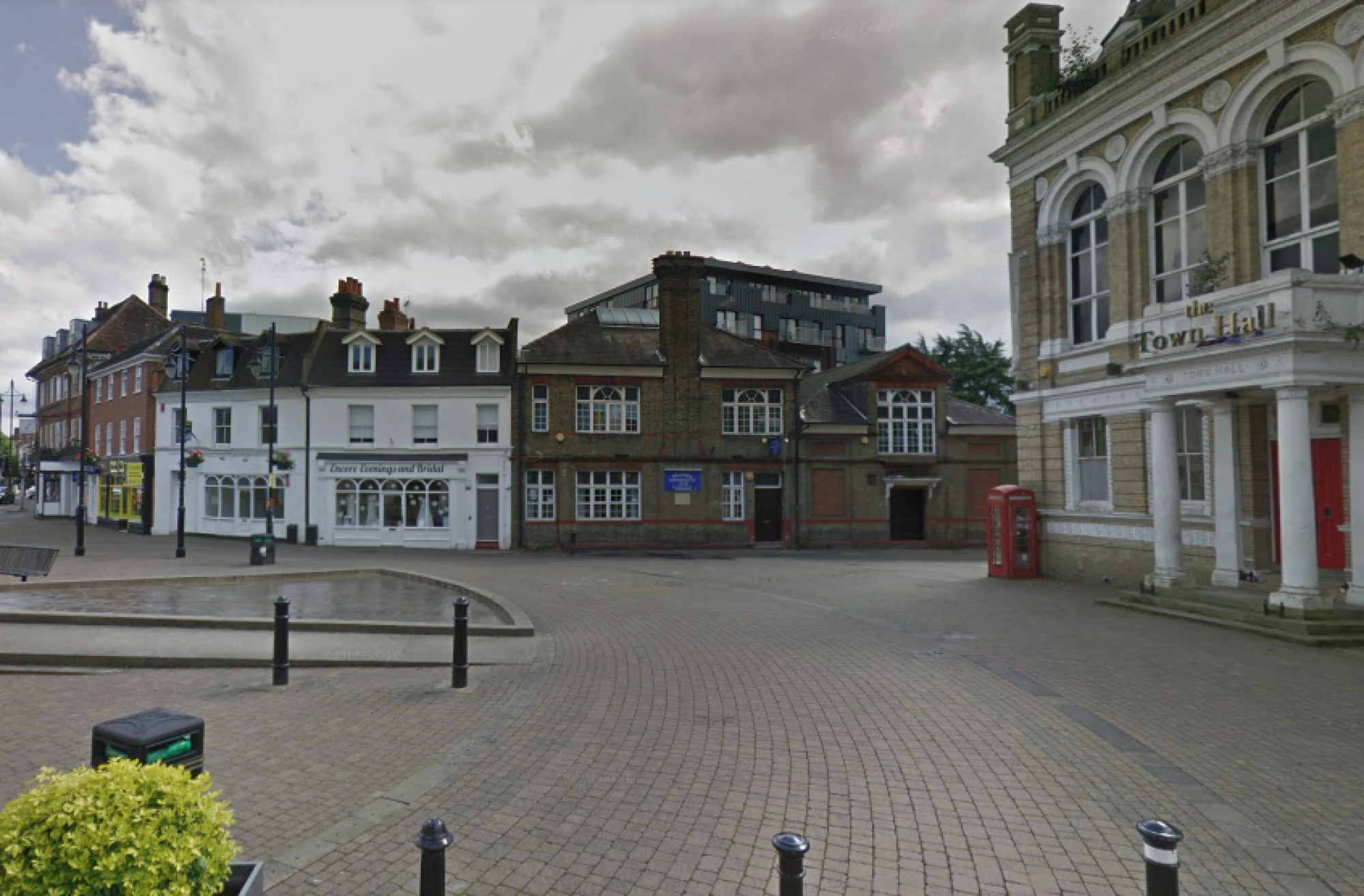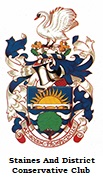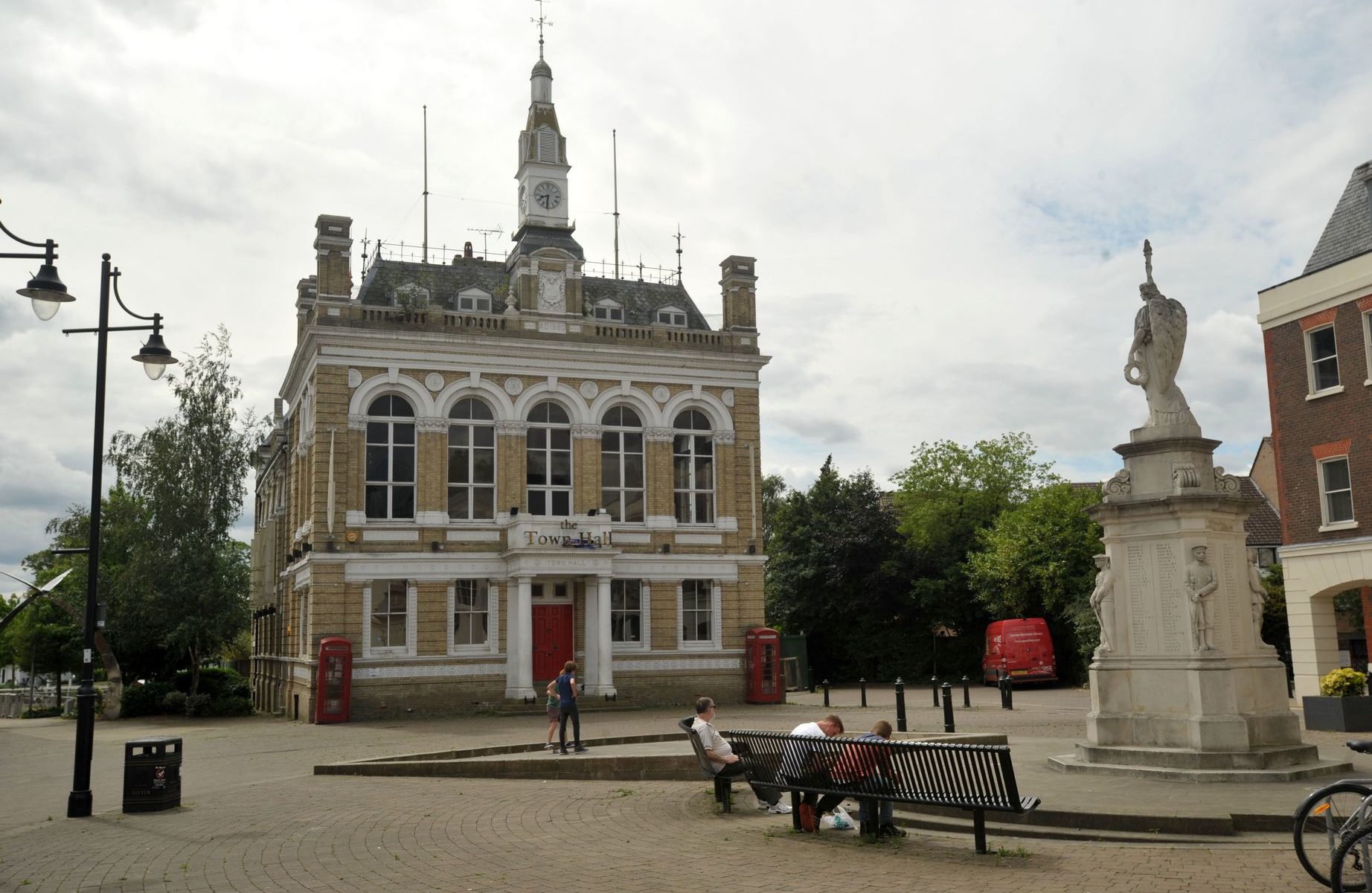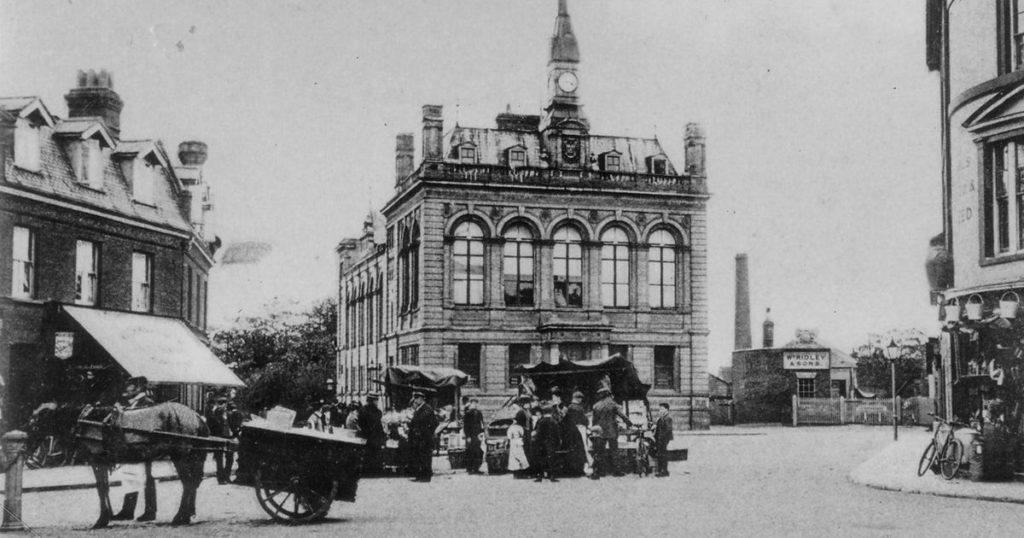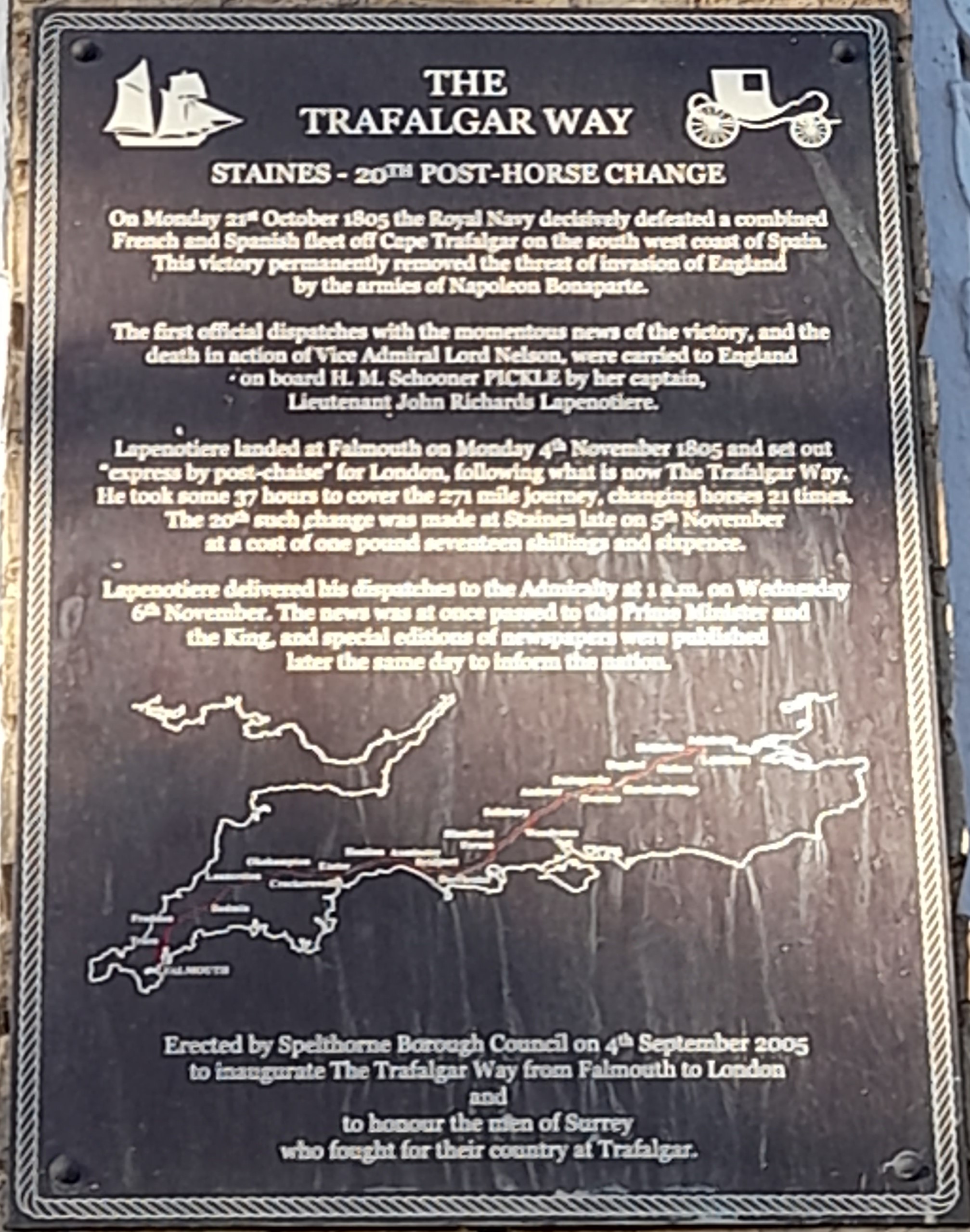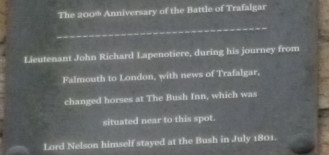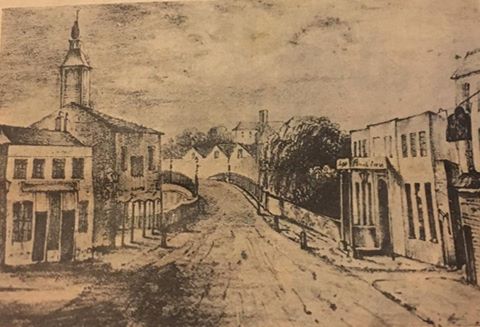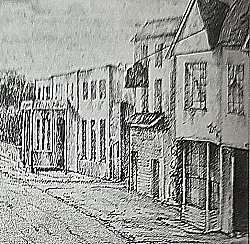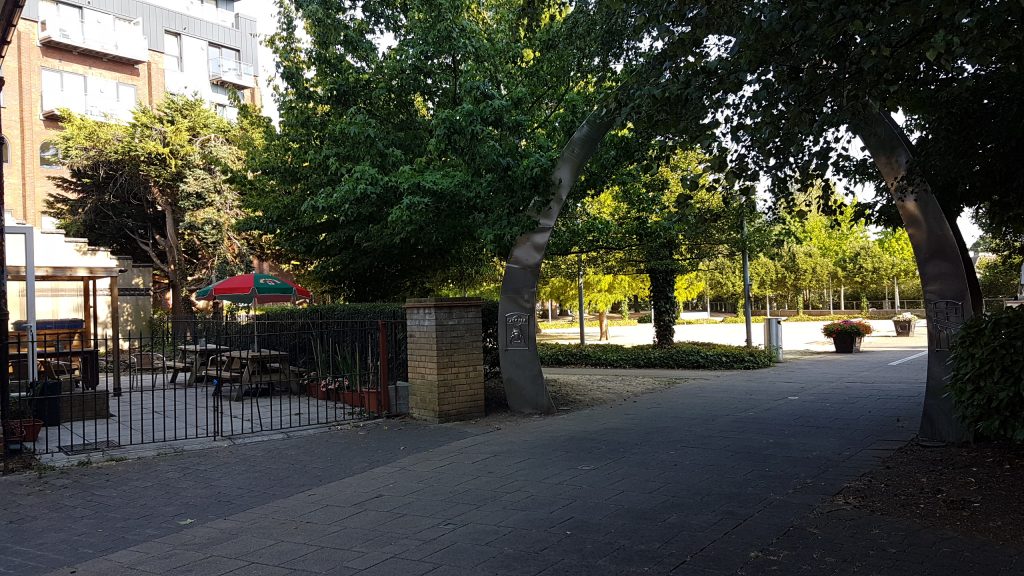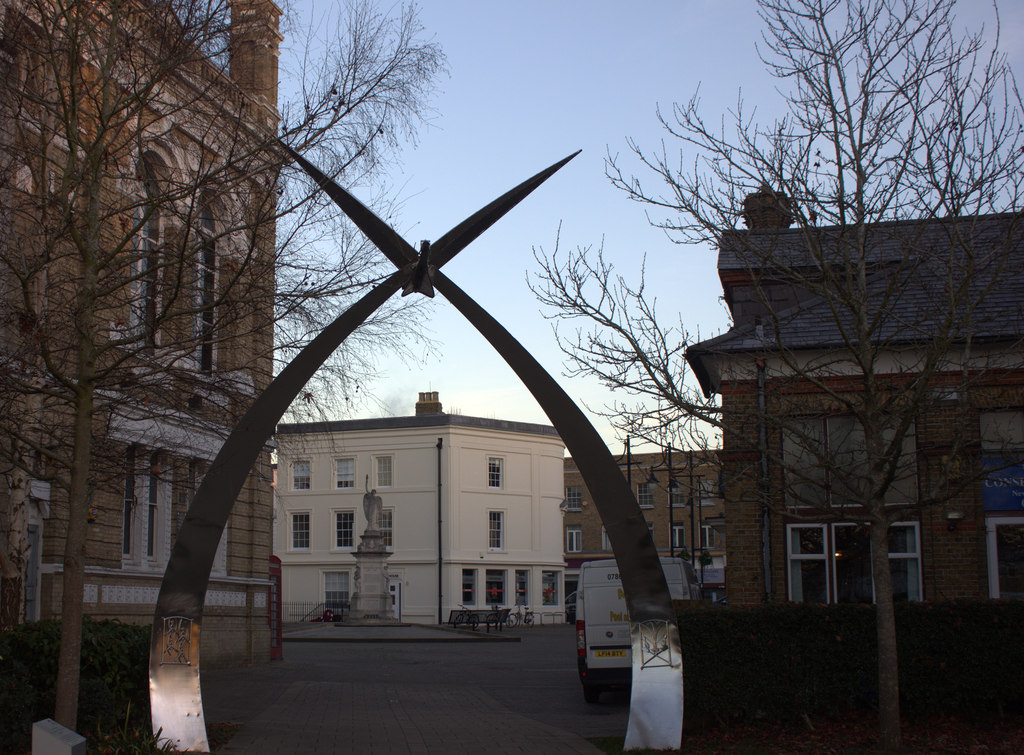Source: www.spelthorne.gov.uk
War Memorial Market Square Staines
Grid Reference: TQ03407147
Building Reference: LL/086
Date Locally Listed: 19 February 2004
N.B. This monument was added to the statutory list on 18 November 2016 by the Secretary of State for Culture, Media and Sport.
Stone. High plinth (commemorating First World War dead) with corner buttresses on which are members of the armed forces as engaged statues. Tall tablet area. Cornice and bracketed rectangular pedestal to statue of angel with torch and wreath. Relocated to Market Square from Memorial Gardens in 2002, as part of a major improvement scheme. A plate listing those killed in World War II was added in 2003
Source: sites.google.com
Staines War Memorial
The memorial sits in the Market Square and is built of Portland Stone. It was unveiled by George Bingham, 5th Earl of Lucan, in 1920. It originally sat in the Memorial Gardens, but was moved here in 2002 as part of the town redevelopment scheme. It is mounted by a winged figure of Victory holding a torch and a wreath. On each corner is a figure of a serviceman – a soldier in field kit with a rifle; a sailor in day rig with signal flags; an airman in flying rig, and a marine in field kit with rifle stand on arms. It was erected to commemorate those locals who gave their lives during World War I (1914 – 1918). In 2003 a plaque was added to remember those who gave their lives during World War II (1939 – 1945). Remembrance Day services held here, each year on 11th November, remember all who gave their lives in military service over the years. The memorial also acts as a water feature, at its base (when turned on) named “Reflections”.
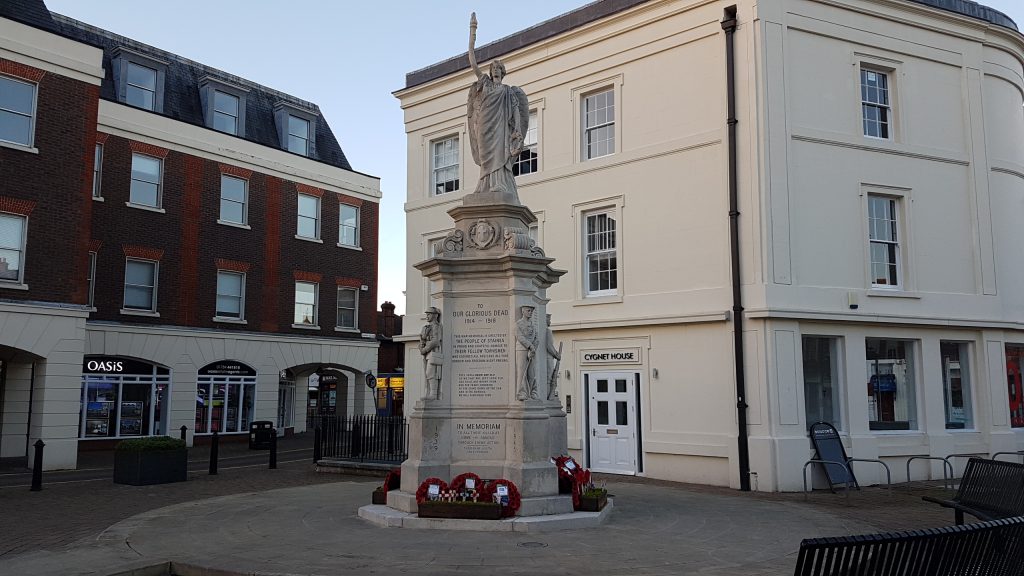
The peculiar shaped white building behind the war memorial is Cygnet House. It incorporates 2 Market Square and 2 Clarence Street and is presently offices. This was built c1830 and is grade II listed. It started life as a shop named Newman’s, selling hay, straw and flour. Immediately behind it sat the Staines Printing Works, plus the offices of the Middlesex Chronicle during the early part of the 20th century.
Staines Town Hall
Staines Town Hall was designed by John Johnson, architect and District Surveyor of East Hackney, and was completed in 1880 in a Flemish Renaissance style with Italian and French motifs. It took nine years to build and cost a princely sum of £5,000. To make way for it the old small spired market-house was pulled down, as were a number of buildings to the east. This widened the street to form the Market Square and provided the site for the Memorial Gardens which were completed in 1897. However, there does seem to be a slight flaw – if you look closely at the front dial on the clock you will notice two XI, one at 9 and one at 11.
The reason we have the Town Hall is due to the Rennie Brothers choosing a site 200m upstream from earlier bridges to build the present bridge. It left a dead-end onto the river at a space where the bottom of old High Street led to the bridge. Locals complained by building the Town Hall with its back to the river, Staines had turned its back on the river. We are still lucky to have this wonderful building as in the early 1970s Staines Urban Borough Council voted by just one not to knock it down. It was thanks to a campaign by concerned local residents which tipped the balance. This led to the formation of the Staines Town Society, a charity whose purpose is to protect the old buildings and heritage of the town.
According to Exploring Surrey’s Past:
“HER 777 – Site of Staines Town Hall or Market House (Pre 1603 – Post 1712)
Staines Town Hall, or market house, originally stood in the middle of the highway and was afterwards removed to its later site. There in the Autumn of 1603 Sir Walter Raleigh was indicted before Commissioners and Middlesex jury. The current Town Hall was built in 1880/81 to replace a smaller one in a miserable and low thoroughfare known as Blackboy Lane. The original position has been sited to a widening of the High Street. The site of the meeting house lies just south of this part of the High Street. Sometime post 1712, the town hall or market house was moved to Blackboy Lane, which ran from where the present town hall stands south-eastwards to the river. It may be presumed that the present building stands very near to the site of the earlier one. The 1st edition of the OS 25″ does not show it by name, but there is an isolated building in the centre of the roadway on the west side where the present Town Hall stands.”
Sources claim Sir Walter Raleigh was tried here, but this is not correct. It was here he was committed in 1603, before his trial at Winchester.
Over the years the Town Hall was used for many public events, including boxing tournaments, the local archaeological group, opera and stage plays. Famous rock bands who played here during the 1960s and 70s included, The Who, The Yarbirds and The Jaywalkers (with Richie Blackmore). The town hall was used for the court scene in the 1982 film Gandhi, where Judge Bloomfield sentences Ghandi to six years imprisonment for sedition. It also featured in the 2002 film Ali G Indahouse.
Staines Town Hall was mainly occupied by the local council, under different names from it opened until 1972, when Staines Urban District Council moved to new offices at Knowle Green. The local Magistrates Court was based her between October 1967 and March 1976, when it also moved to new offices at Knowle Green. The Old Town Hall opened as new Arts Centre in 1993; officially opened on 15 April 1994 by actor and director Kenneth Branagh. In 2004 the building became a “Smith & Jones” pub. However, when I went there recently at lunchtime, it seemed to have been abandoned and signs on the windows were advertising the leasehold of the building being up for sale.
Both of the red telephone kiosks at the front of the Town Hall, although looking a bit shabby at present, are grade II listed. The Old Fire Engine Shed, at the back right of the hall, was built c1880 and housed Spelthorne’s first museum from 1980 to 2003. You can read more about Staines Town Hall on the British Listed Buildings website.
Trafalgar Way Plaque
On the side of the Town Hall, as we pass, look up to see a plaque which remembers “The Trafalgar Way”. This is the 271 mile route taken “express by post-chaise” by Lieutenant John Richards Lapenotiere between 4th & 6th November 1805. He travelled from Falmouth to the Admiralty in London, carrying the news of the momentous victory and the death in action of Vice Admiral Lord Nelson at the Battle of Trafalgar. In total he took 37 hours and made 21 stops at coaching inns to change horses; the 20th of these stops was at the Bush Inn at Staines. The Bush was behind where the Town Hall now sits and next to the old Staines Bridge. Ironically, as you can see from the second plaque below, Lord Nelson stayed at the Bush Inn (apparently with Lady Hamilton) in July 1801 and just four years before his death.
Bush Inn
The Bush Inn was located on the roadway to the old Medieval Bridge (Where the Town Hall is now).
1828. This was a very large Inn that also had extensive grounds with gardens, stables and a tap room. It could stable 100 horses at one time. The land went all the way across the Colne river to where the new Bridge is now. It was demolished to make way for the Town Hall, Market Square and Clarence Street.
It became the Bush and Clarence, located on Clarence Street and Church Street.
A number of years later the Bush name was removed and the Clarence moved completely to Church Street. It is now the London Stone.
Swan Arch
This is one of two Swan Arches which mark entrances to the riverside Memorial Gardens. They were hand-made from stainless steel by Anthony & Simon Robinson. The motifs on the legs were designed by pupils of Kingscroft Junior School, each depicting images of the town. Both arches have a single swan in flight at the top – the swan represents the symbol of Staines. Kingscroft Junior School was amalgamated with Knowle Park Infant School and Shortwood Infant School in September 2011 to form Riverbridge Primary School.
Source: www.spelthorne.gov.uk
Metropolitan Drinking Fountain High Street Staines
Grid Reference: TQ03697168
Building Reference: LL/064
Date Locally Listed: 19 February 2004
Located opposite no. 109 High Street.
Late 19th Century stone drinking fountain of considerable scale. Located in High Street in 2002 as part of the pedestrianisation scheme. From the 1950s to 2002 located in Moor Lane, Staines and prior to that in Market Square, Staines. Originally comprising a granite fountain, and separate dog trough and cattle trough. Bought with local subscription and ownership, transferred to Staines UDC in 1898. Structure no longer includes the dog trough.
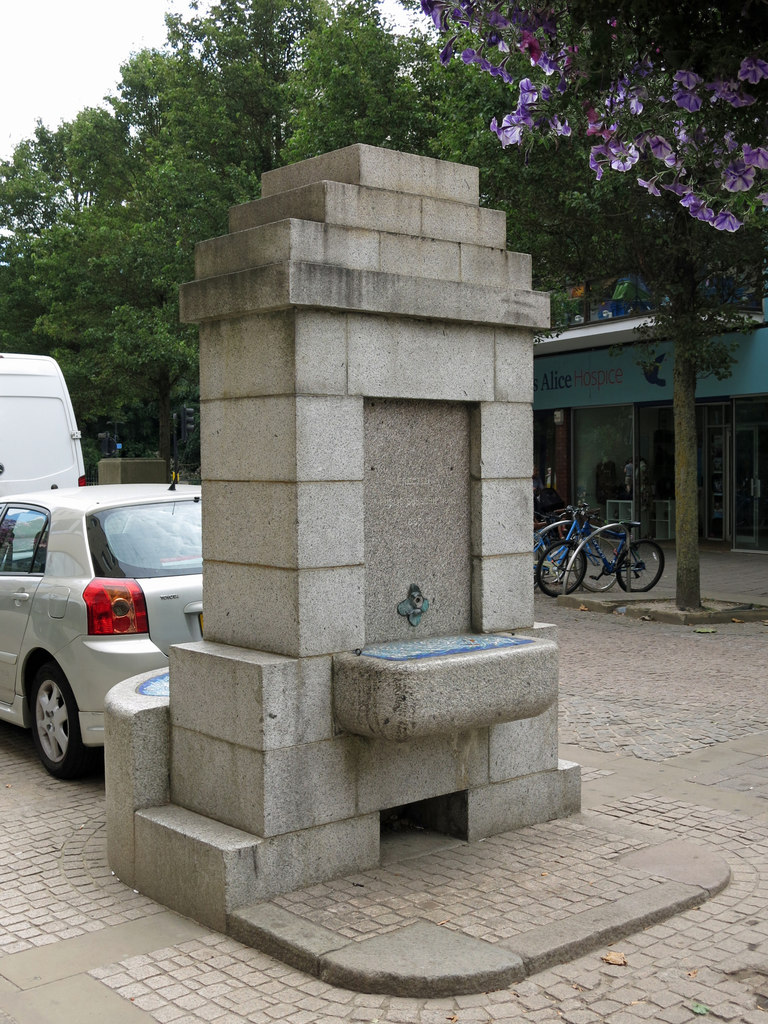
Drinking Fountain 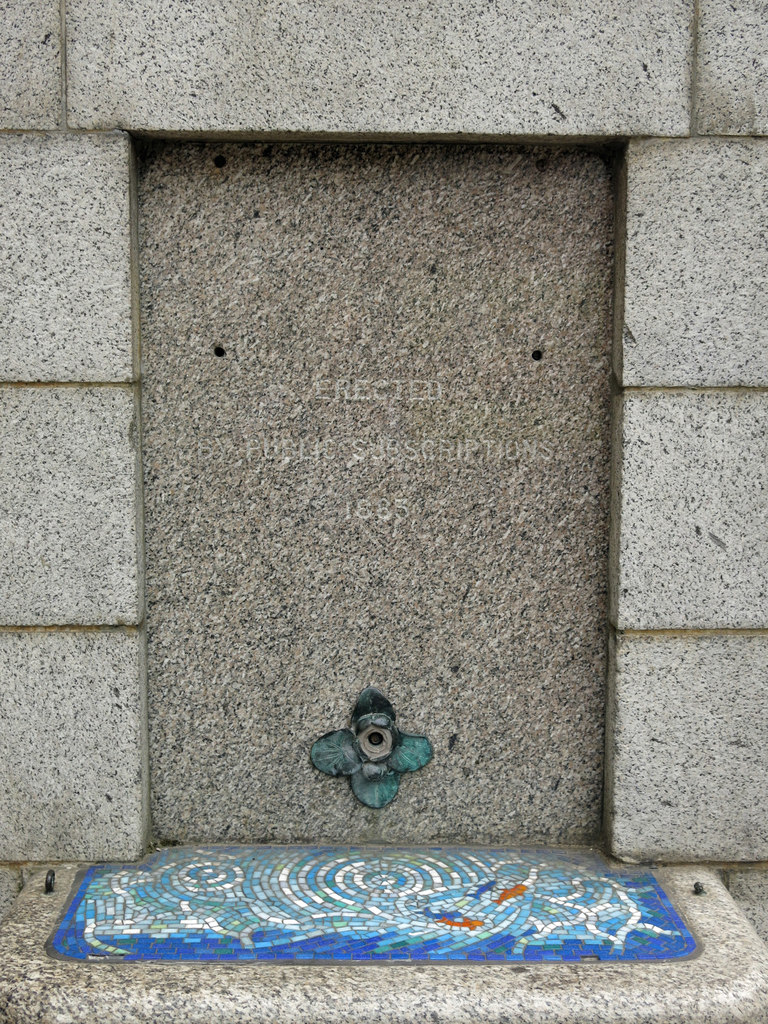
Drinking Fountain Detail
MARKET AND FAIRS
Source: www.british-history.ac.uk
History Of Markets And Fairs
In 1218 the Sheriff of Middlesex was ordered to see that Staines market was henceforward held on Friday, instead of Sunday. The Friday market continued until the early 19th century, and the market rights and tolls belonged to the lords of the manor.
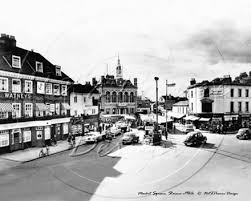
The markethouse was in existence in 1662. By the 19th century, and apparently by 1723, it was a small brick building of two stories, with a spire, and stood in the then main road, where the present Town Hall stands. The market declined in the 19th century and was discontinued by 1862. In 1872, following a vestry resolution, an Act was obtained under which the market-house and neighbouring buildings were demolished, the Town Hall was erected, and a market was established. The commissioners appointed by the Act were superseded by the local board, whose responsibilities for the market have passed to the urban district council. In 1957 a general market was held on Wednesdays and Saturdays.
In 1228 the king granted Westminster Abbey a four-day fair to be held in Staines at Ascensiontide. In 1241 the date of the fair was changed to 7-10 September. In 1675 there was still a fair on 8 September and by 1772 a second fair was also held. From 1792 the fairs lasted for one day each and were held on 11 May and 19 September. They were abolished in 1896, at the request of the urban district council. By that time they were largely pleasure fairs and occupied the Market Square and most of the High Street. Earlier in the century cattle had been the chief commodity, with onions and toys at the autumn fair, which was also in 1792 a hiring fair.
